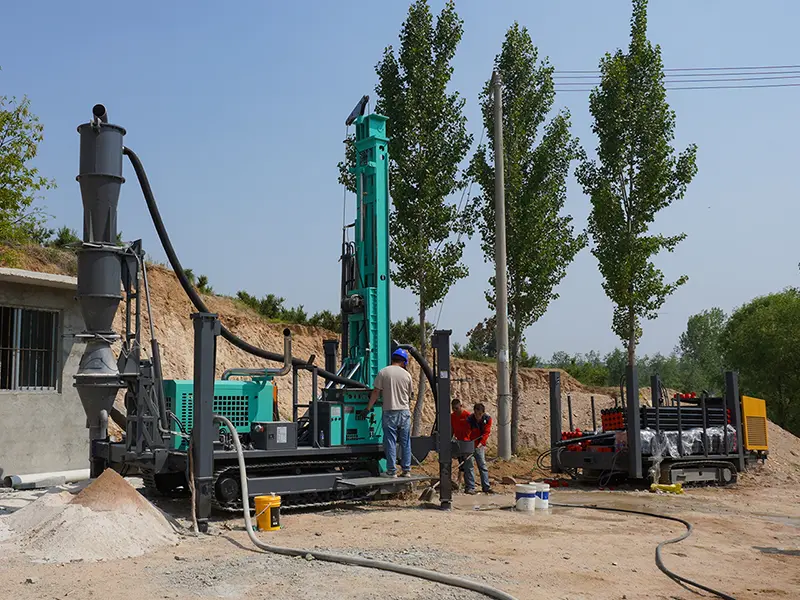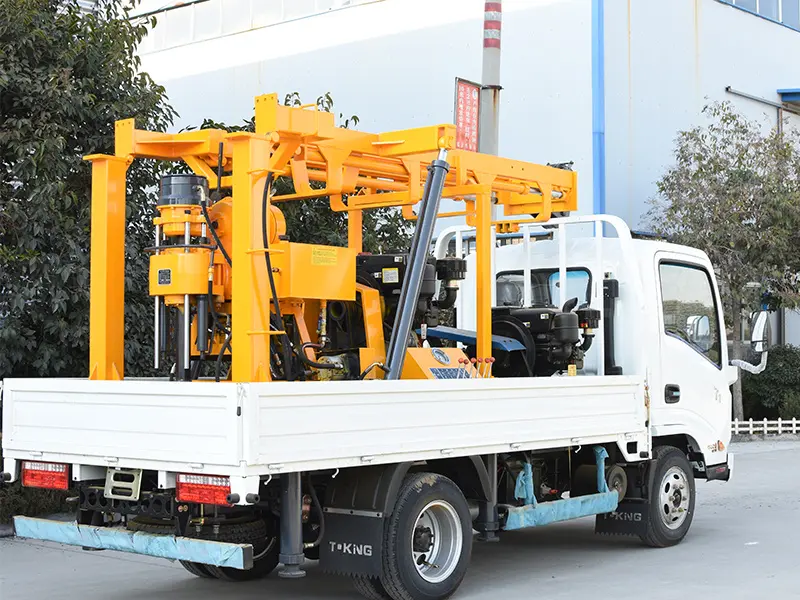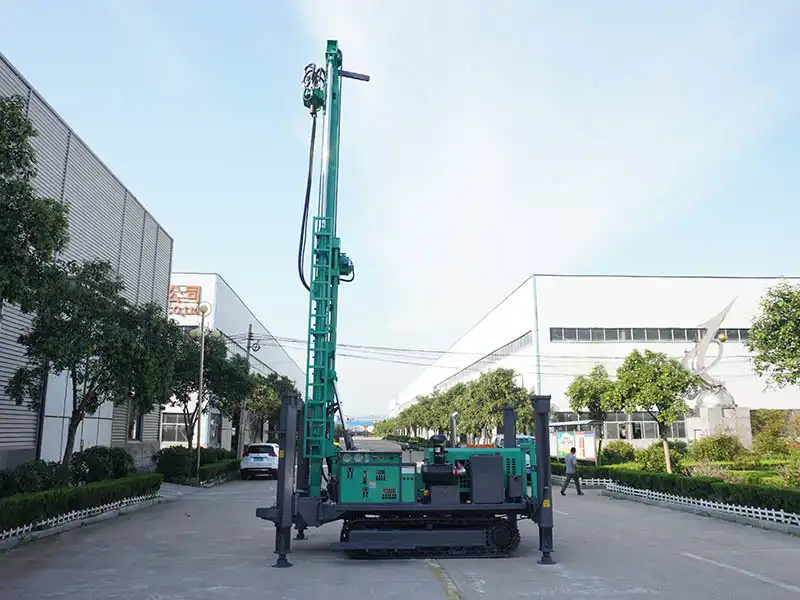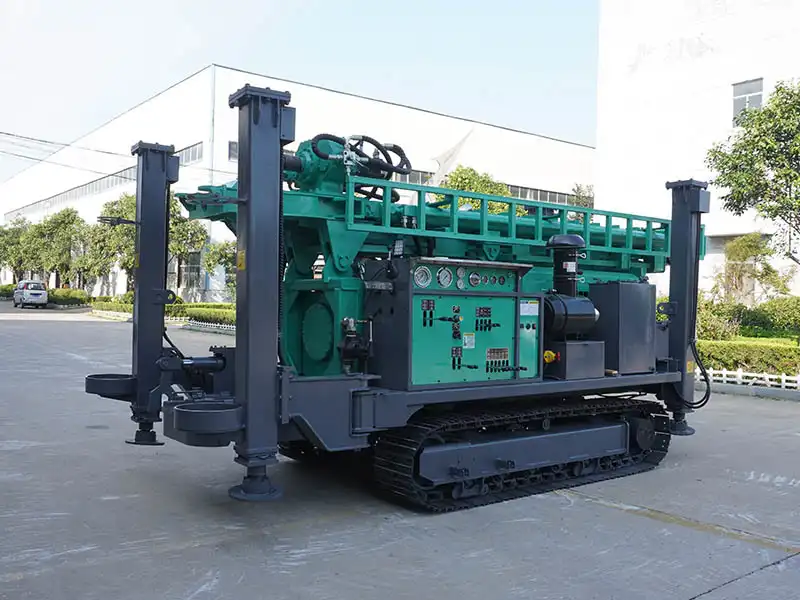La profondeur idéale d'un puits d'eau dépend la profondeur de la nappe phréatique locale, les couches géologiques et les objectifs de qualité de l'eau. Forage de l'eau Un forage trop superficiel risque d'entraîner une contamination et un assèchement saisonnier ; un forage trop profond augmente inutilement les coûts. La plupart des puits domestiques se situent dans une fourchette de 15-100 mètrestandis que les puits plus profonds (100-300 mètres) accèdent à des aquifères protégés dans les régions arides. Les forages d'essai et les études géologiques sont essentiels pour déterminer l'emplacement de l'aquifère. point faible-suffisamment profondes pour assurer une eau propre et fiable, mais dont la construction et l'entretien sont peu coûteux.

Étape 1 : Déterminer la profondeur de la nappe phréatique locale
Les nappe phréatique est la profondeur souterraine à laquelle le sol/la roche est complètement saturé. Les puits peu profonds (10-30 mètres) fonctionnent si :
- Les précipitations sont régulières (par exemple, dans les régions tropicales comme le Ghana).
- Il n'existe aucune source de pollution importante (eaux usées, exploitations agricoles, usines) à proximité.
Puits plus profonds (>50 mètres) sont critiques lorsque : - Les nappes phréatiques fluctuent selon les saisons (par exemple, savanes sèches).
- Les eaux souterraines peu profondes sont contaminées par des nitrates ou des bactéries.
Exemples régionaux:
- Floride, États-Unis: Sol sablonneux → puits à 30-60 mètres.
- Arabie Saoudite: Climat aride → les puits dépassent souvent 200 mètres.
Étape 2 : Éviter la contamination et les puits secs
Puits peu profonds (<30m) Risques:
- Pollution de surface: Les bactéries/nitrates s'infiltrent des fermes ou des fosses septiques.
- Séchage saisonnier: Les nappes phréatiques baissent en été ou en cas de sécheresse.
Puits profonds (>100m) Avantages:
- Filtration naturelle: Les couches de roche/sable purifient l'eau.
- Rendement stable: Moins affecté par les changements de précipitations.
- Risque de contamination réduit: Les polluants de surface atteignent rarement les aquifères profonds.
Étape 3 : Cartographier les couches géologiques
Les différentes couches de sol et de roche déterminent la profondeur du forage :
| Type de couche | Profondeur de forage sûre | Notes |
|---|---|---|
| Sol sablonneux | 20-50 mètres | Forage facile ; nécessite un tubage pour éviter l'afflux de sable. |
| Argile | 30-80 mètres | Retient bien l'eau ; la lenteur de la recharge peut limiter le rendement. |
| Roches fracturées | 50-150+ mètres | Cible les fissures qui stockent l'eau ; nécessite des forets à percussion/rotatifs. |
| Roche solide (granit) | 100-300 mètres | Aquifères profonds ; nécessite des forets robustes. |
Toujours effectuer un exercice d'essai pilote pour identifier les transitions entre les couches et éviter les zones sèches.
Étape 4 : Calculer la profondeur minimale de sécurité
Utilisez cette formule pour estimer la profondeur minimale de sécurité:
Profondeur de la nappe phréatique + 10-15 mètres = Profondeur minimale du puits
Pourquoi ajouter une profondeur supplémentaire ?
- Prévient les problèmes d'aspiration des pompes en cas de sécheresse.
- Fournit une réserve d'eau en cas de baisse temporaire de la nappe.
- Évite l'accumulation de sédiments au fond du puits.
Étape 5 : Comparaison entre la profondeur et le coût
Augmentation des coûts de forage de façon exponentielle avec une profondeur due à :
- Besoin d'équipements plus lourds (par exemple, des plates-formes rotatives pour plus de 100 m).
- Exigences plus longues en matière de coffrage et de cimentation.
- Augmentation du temps de travail/carburant.
Conseils pour réduire les coûts:
- Puits en grappe dans les zones à haut rendement (identifiées par des études géophysiques).
- Forage de partage avec les voisins dans les zones rurales.
- Utiliser une gaine en PVC pour les puits peu profonds (<60m) ; acier pour les puits plus profonds.
Étape 6 : Protéger la qualité et la longévité de l'eau
- Sceller les sections peu profondes: Utiliser de l'argile bentonite ou du ciment pour bloquer les eaux de surface polluées.
- Installer des bouchons sanitaires: Empêcher les insectes/débris de pénétrer.
- Analyse annuelle de l'eau pour les bactéries coliformes et les nitrates.
Quelle est la profondeur des puits dans votre région ?
| Région | Moyenne Profondeur | Principales influences |
|---|---|---|
| Zones côtières | 20-50m | Nappes phréatiques élevées ; risque d'intrusion d'eau salée au-dessous de 60 m. |
| Zones montagneuses | 80-200m | Aquifères profonds dans des roches fracturées ; forage difficile. |
| Plaines arides | 100-300m | Aquifères profonds et isolés ; coûteux mais fiables. |
Il n'y a pas de profondeur "unique". Cibler une profondeur qui:
- Pénètre un aquifère protégé (confirmé par des forages d'essai).
- Dépasse la profondeur minimale de sécurité (nappe phréatique + 10-15m).
- Coût des soldes avec la sécurité de l'eau à long terme.
Conseil de pro: Engager un hydrogéologue local pour une étude du site. Un investissement de $500 peut permettre d'économiser $10.000+ en puits ratés !



